Filter Bubbles and the RWW Real-Time Web Summit, June 2010
I take another long series of flights to New York City for ReadWriteWeb's latest real-time web event. Before that, I chat with Twitter's Dick Costolo and get interviewed by ABC News Radio.
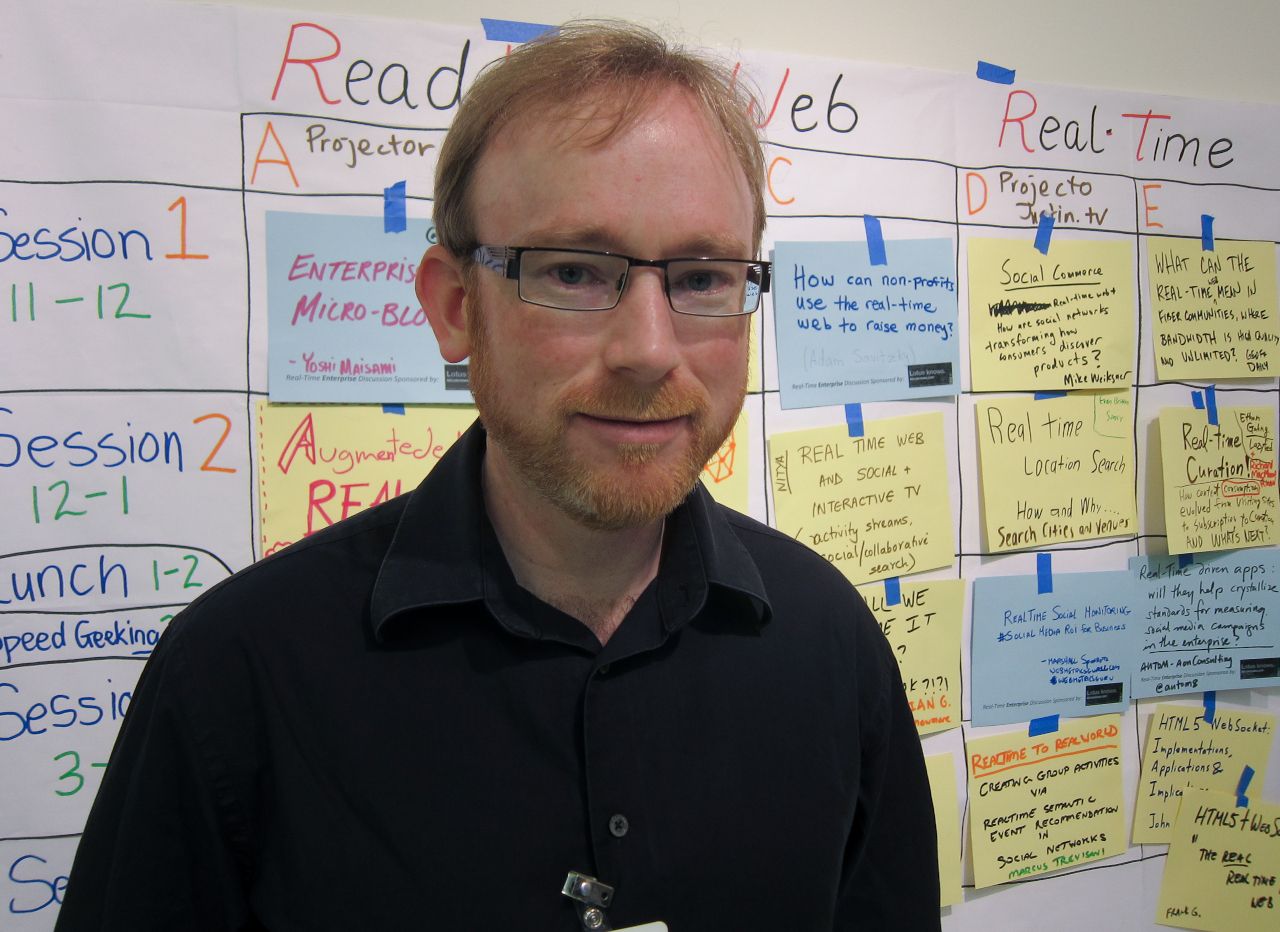
It was another late arrival coming into New York—near midnight on Sunday, June 6—but this time I had booked a hotel in Manhattan. It was a fifteen-minute walk from the Metropolitan Pavilion, our Real-Time Web Summit venue. That would be on Friday, but I’d arrived early to participate in events attached to New York’s Internet Week.
The first event I went to was the CM Summit, run by our advertising partners FM Publishing (the CM stood for “conversational marketing”). There I ran into Dick Costolo, the Feedburner founder who was now COO at Twitter (within a few months, he’d be appointed CEO). I had always enjoyed talking to Dick, and from day one at Feedburner, he’d gone above and beyond trying to keep early adopters like me happy. When my blog was still relatively young, during the first half of 2005, he would email me back on support queries even when it was late at night his time. I hoped he would bring the same passion for customer satisfaction to Twitter.
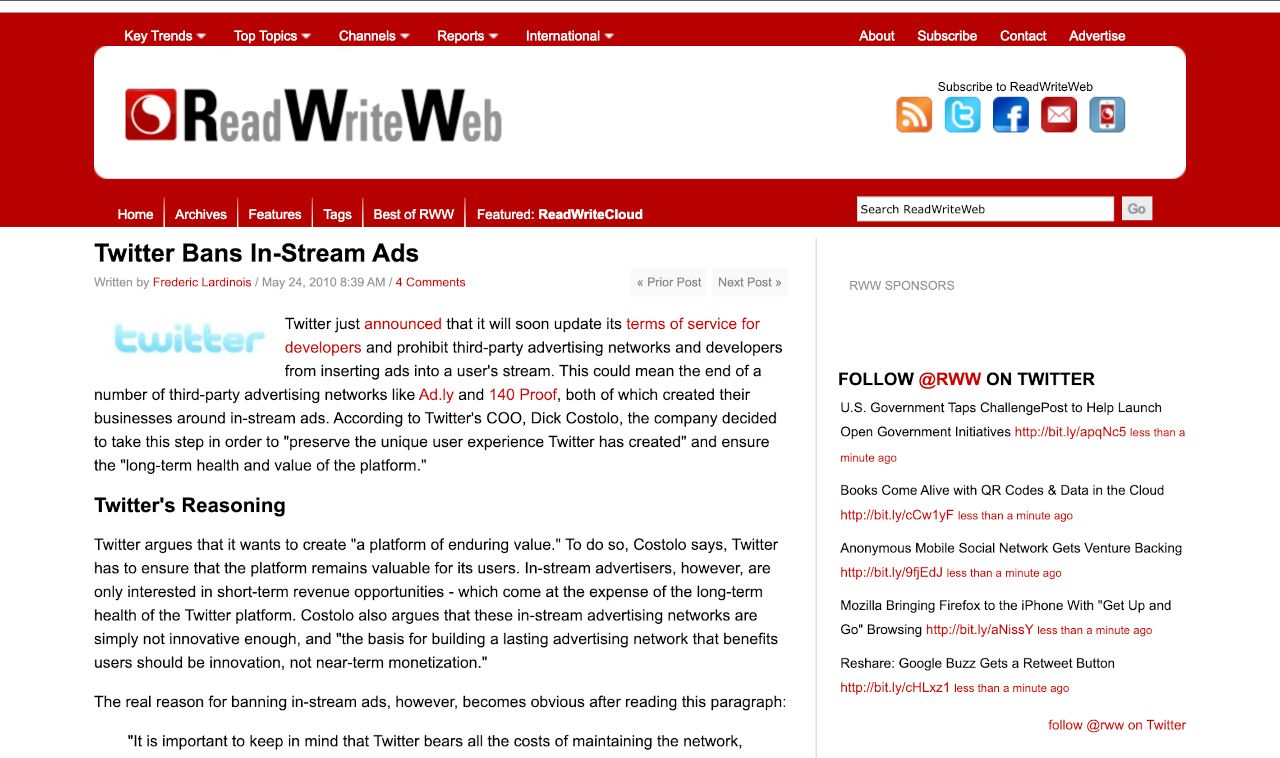
RWW was writing a lot of stories about Twitter, and there were ominous rumblings in the tech industry about the restrictions Twitter was starting to put on its developer platform. Like many of our readers, I was concerned about this—wasn't Twitter supposed to be an open platform? But if anyone would listen to the needs of early adopters and developers, I reasoned, it was Dick.
My first few days in New York were full of interesting one-on-one conversations like that. However, while I was enjoying the Internet Week events and schmoozing in the evenings, I was really struggling to get to sleep at night. I bought a bottle of NyQuil on Wednesday, which finally brought me some relief. You couldn’t buy over-the-counter drugs like that in New Zealand.
ABC News Radio Visit
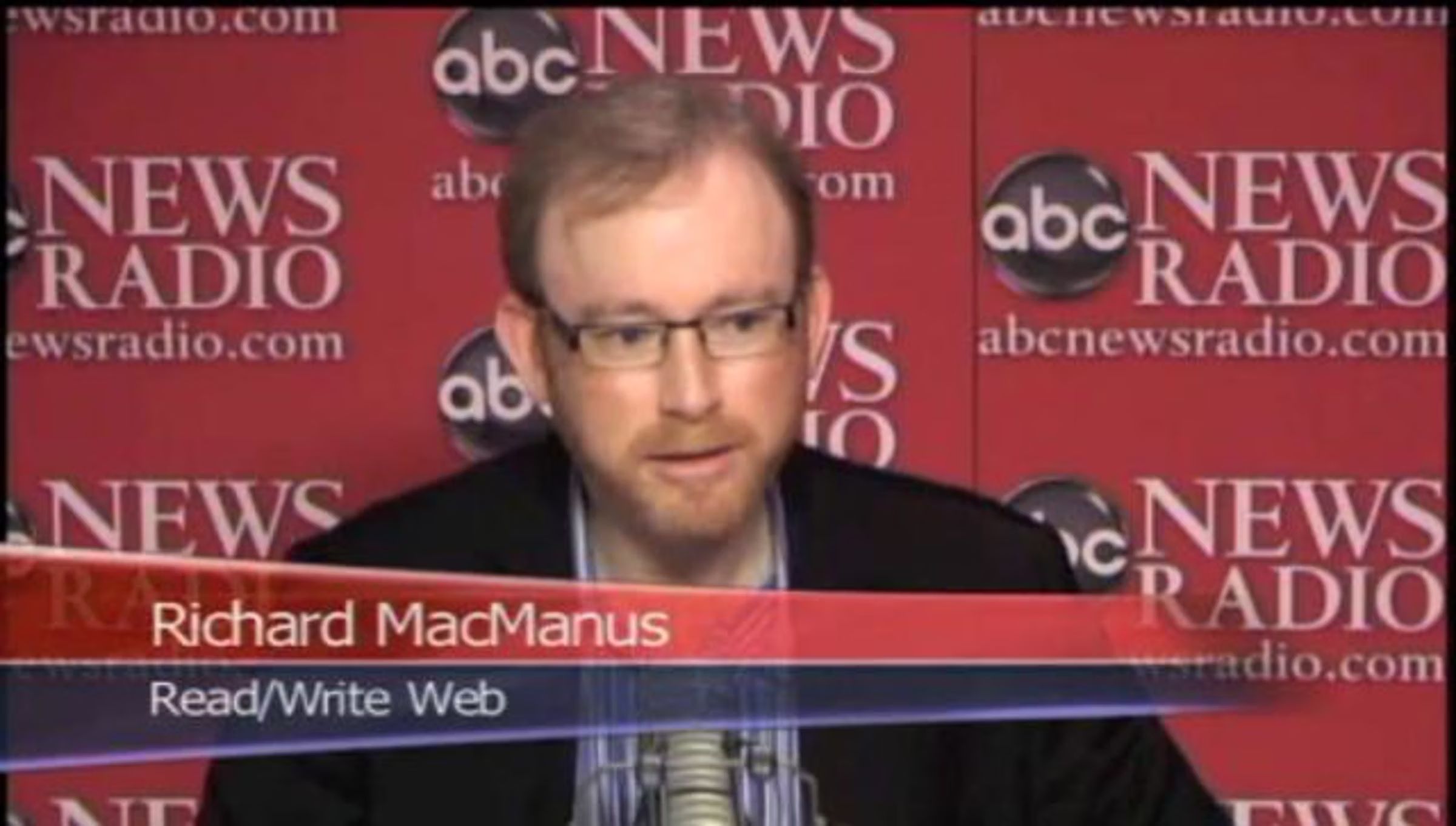
Early afternoon on Thursday, I took a cab to the studio of ABC News Radio, up on West End Avenue, between Sixty-Fifth and Sixty-Sixth. A young journalist named Dan Patterson had reached out to me via Twitter and then email, requesting an interview. The plan was for Dan to record our radio interview on video and then upload to Vimeo, so that it could be integrated into the ABC News Radio website. This was years before podcasters began doing video as par for the course. But podcasting itself wasn’t much of a thing in 2010—radio was still king, when it came to audio content. So I was intrigued by what Dan was doing.
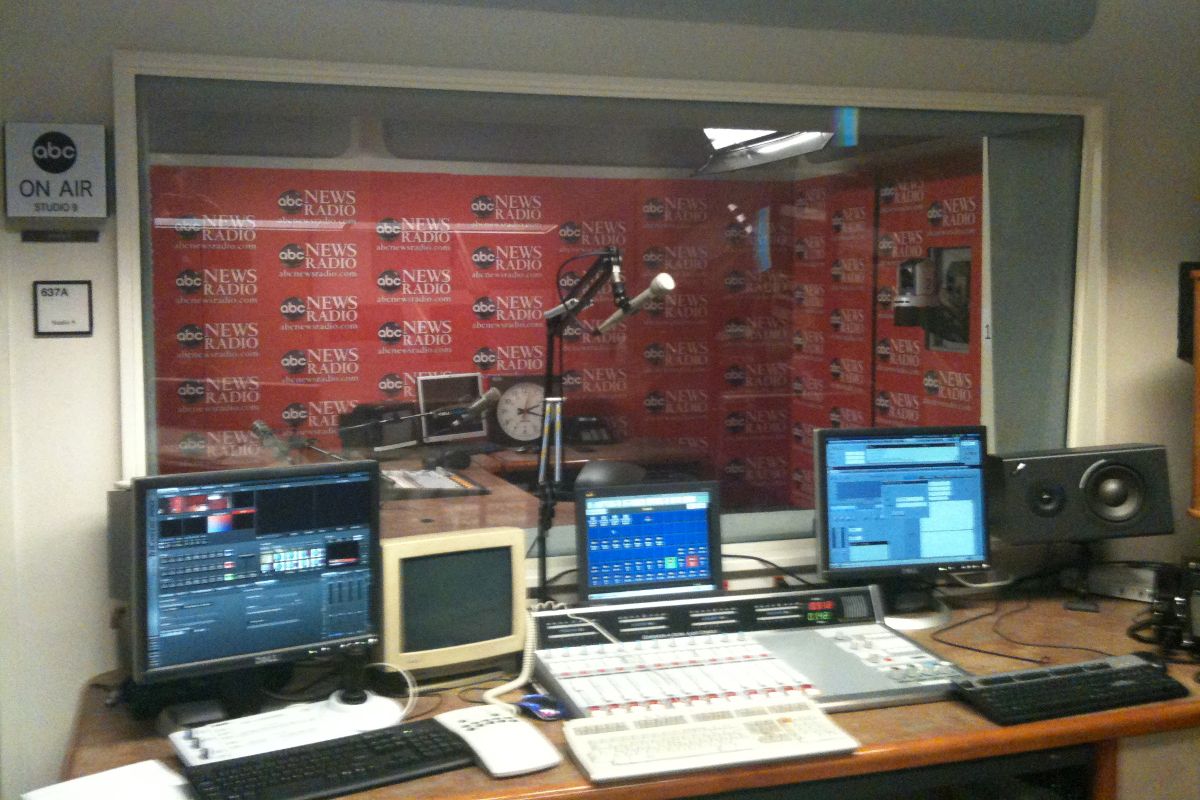
I found myself surprisingly relaxed during the interview. Perhaps it was watching Dan do his radio voice in person, which both amused and impressed me, but I was confident and happy throughout the conversation. In his intro, Dan said that we’d be “talking the Semantic Web, real-time analysis, and the inevitable zombie apocalypse.” I smiled and joked that I certainly felt like a zombie, after my long trip from New Zealand.
After I explained why the real-time web was an important trend, Dan perceptively brought up some of its issues. “Isn’t there the danger that we become isolated in bubbles and in only what’s interesting to us?”
What Dan was touching on was starting to be a regular talking point among the tech intelligentsia. The term filter bubble was coined for this by the activist and author Eli Pariser, but it was still a year away from being popularized.
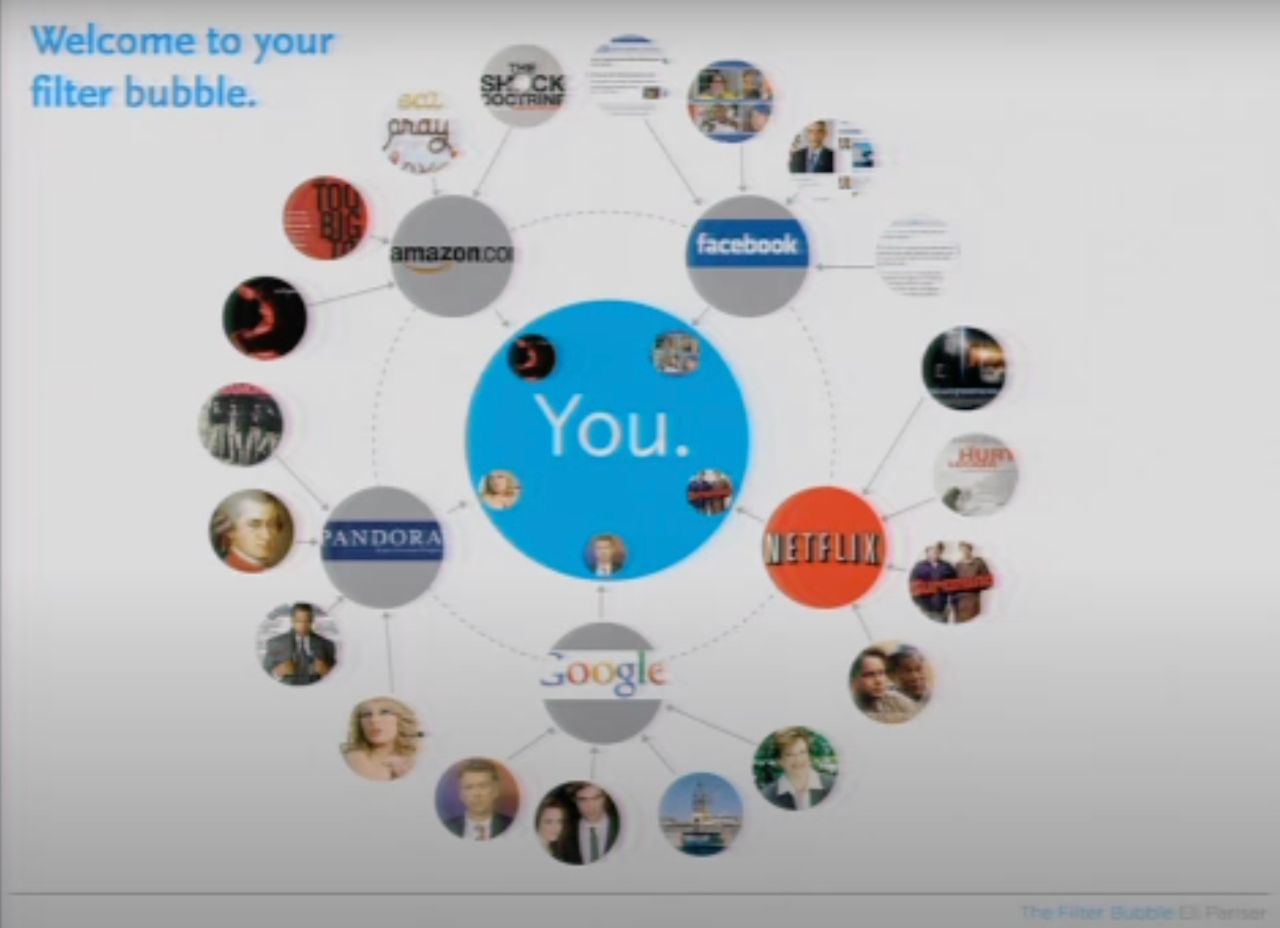
Social media was still a relatively new phenomenon in the mainstream, so I felt the need to defend it that day. Also, bubble was a loaded word in the tech world—it also referred to markets, especially when it came to internet companies. So after Dan mentioned that word, it became lodged in my jet-lagged brain and I unwittingly used it twice in my extended answer. I noted that relevant information “bubbles up in your stream” on Facebook, thanks to your friends, adding that your location at any one time can provide you with real-time information that is useful to you.
“I travel quite a lot at the moment,” I said, “and everywhere I go, there are new types of information that I wouldn’t have found out if it weren’t for Twitter or Facebook, or some of these other real-time streams of information. Wherever I am at one particular time, I find out about certain things that I wouldn’t have found out about before, but they’re actually relevant to me because I’m at that place at that time. So I think there’s a lot of serendipity to the real-time web.”
In conclusion, I said, “It all bubbles together.”
RWW Real-Time Web Summit

We’d been a bit worried about ticket numbers in the days leading up to the RWW Real-Time Web Summit. The venue was relatively small, so we’d be able to fit 150 to 175 people in. But as of Tuesday we’d only registered 121 people—and the majority of those were freebies. It was looking like we’d make a loss on the event, but I was more concerned with having enough people there on Friday to make it a vibrant, busy day. After all, there was less incentive for people to turn up if they hadn’t paid for their tickets.
However, as we kicked off proceedings on Friday morning, the large, rectangular room felt full and there was an excited buzz in the air. I gave a sigh of relief. As at our first unconference, Marshall was doing the keynote. This was his main topic of interest, and he also wanted to show off some of the real-time news-gathering tools that he and our news team used every day. So I was able to sit back and relax while he delivered his presentation.
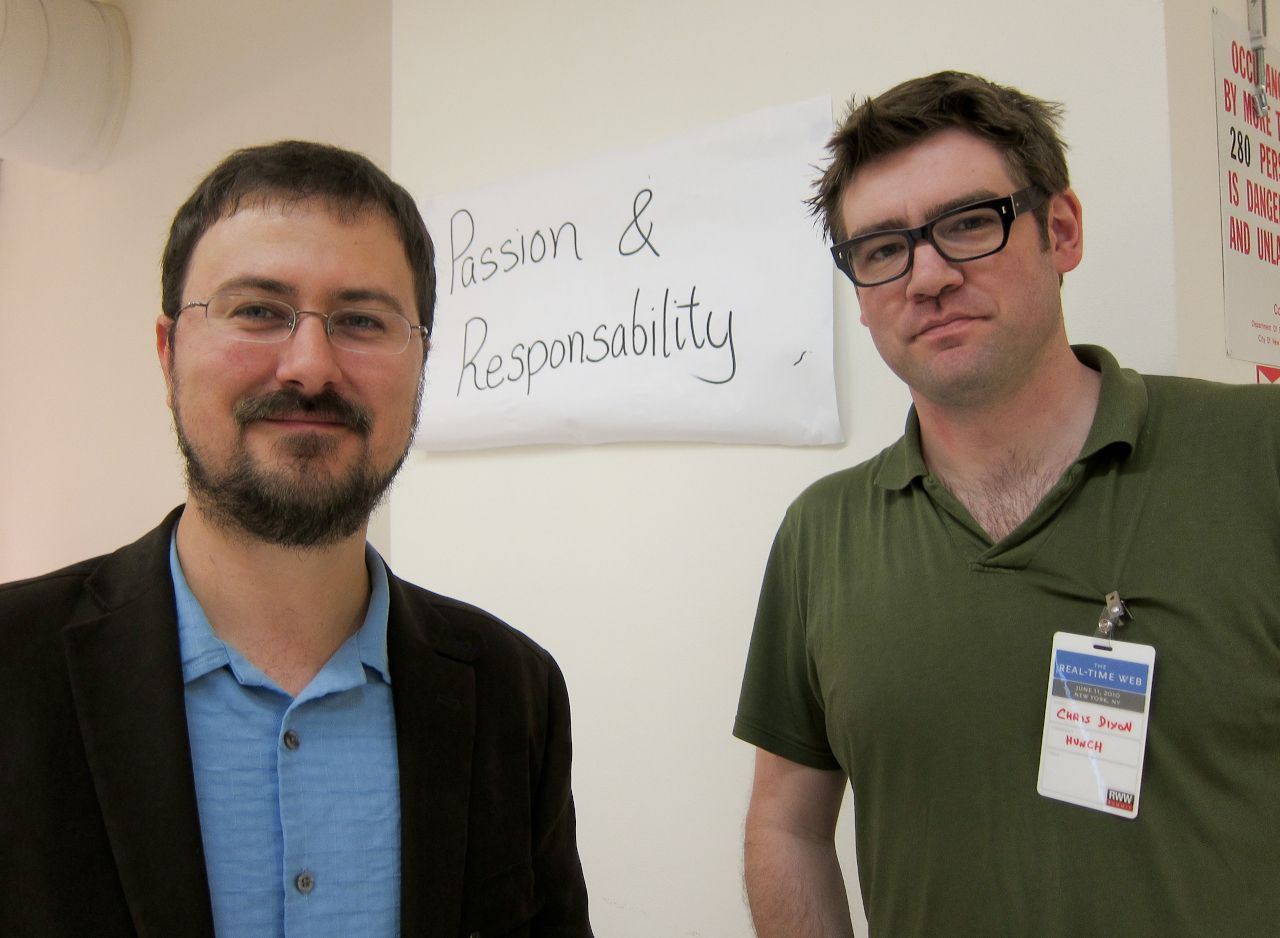
Afterward, Kaliya facilitated the discussion that set the agenda for the day, and once again, the paper schedule quickly filled out. Everyone in the room chatted enthusiastically about the topics they’d jotted down with colored markers: “enterprise micro-blogging,” “real-time curation,” “real time where” (location), “privacy and identity,” and so on. The topics ranged from broad (“collective knowledge”) to specifically technical (“HTML5 WebSocket”).
The morning sessions whizzed by, and the speed-geeking session after lunch was popular. Attendance dropped in the afternoon, but we were running our event on a sunny summer Friday, at the end of a long Internet Week for many. However, we kept plenty of bums on seats until the final wrap-up session—no doubt helped by the fact that one of our sponsors, Alcatel-Lucent, was giving away six iPads. Redg Snodgrass and Mike Maney were the two Alcatel-Lucent reps (the company was a long-running sponsor and we knew both guys well), and they’d come up with a fun concept to give away the last two iPads: a rap contest.
To my surprise, one of the raps was a serenade to me. A tall, bearded guy with slicked-back dark hair got up and delivered his rap: “Richard’s a real-time junkie / He swings through the web like a monkey / Never missing a beat / Of the word on the street / That’s what makes him the blogger most hunky.”
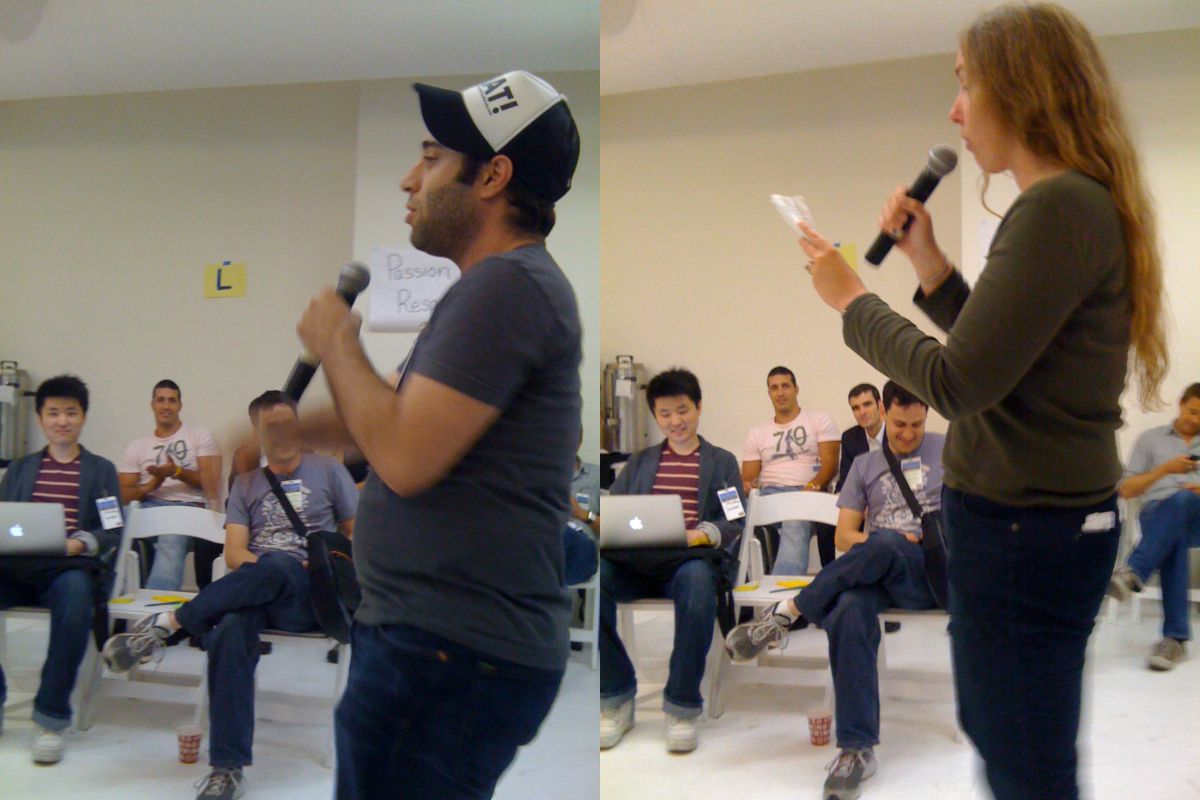
Not everyone liked the rap contest—one attendee compared it to a sleepaway camp activity—but most attendees appreciated the light touch at the end, and it was a nice segue into the post-event reception.
Everyone I talked to seemed to enjoy the event. One of our regular readers, Liz Pullen, later wrote a comment on our wrap-up post: “Coming at the end of a long, tiring Internet Week NY, I thought about skipping it but am so glad I came. It reenergized me and the meaningful conversations I had over the day made it well worth my time.” It was comments like that made the day worthwhile, overall, and it had been another boost for our brand.
However, I also knew that ticket sales had been lower than expected. Just how low, I wouldn’t discover until after the weekend.
On Monday morning, at a New York café, Sean delivered the bad news to Marshall and me: we’d lost $25,000 on the event, a figure that surprised and disappointed me. A big reason for the loss was that we’d only sold $8,000 in tickets, which was 50 percent down on the previous event (and a further 50 percent down on the first event).
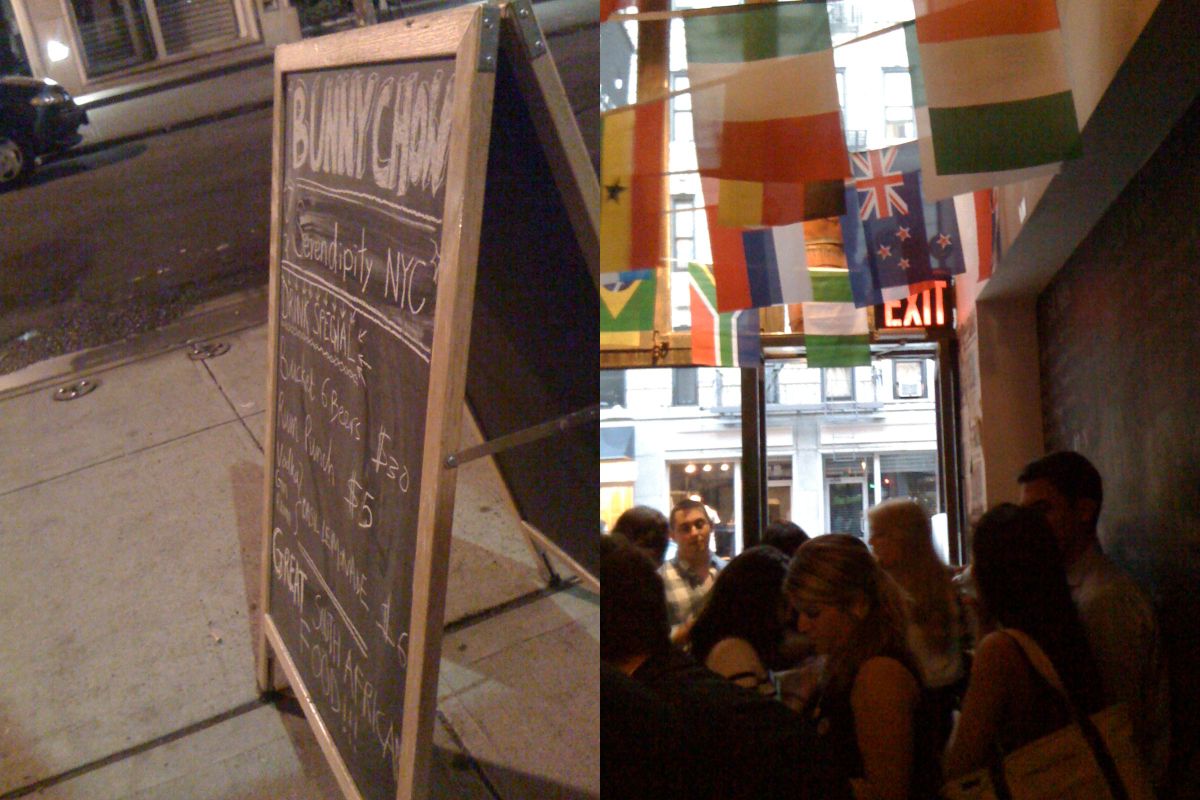
In addition to lack of event revenue, we were also struggling to sell our premium reports that year. So we’d have to make some tough decisions about reprioritizing RWW business for the rest of 2010. We first decided to put aside events for the time being and refocus on core RWW editorial in Q3. We also decided to only do further premium reports if we had a presigned sponsor (in other words, guaranteed revenue). Finally, we made the decision to let go our marketing person, Elyssa, whose quarterly goals had been primarily tied to event ticket sales and report sales.
This, needless to say, was awkward for me given my previous personal relationship with Elyssa. But the following day, I delivered a carefully worded email to her back in New Zealand. She took it well and, in the ensuing back-and-forth, I agreed to a four-week notice. I felt bad about the situation, but I knew that as a business we had to knuckle down on what we did best: writing blog posts and selling CPM adverts and sponsorships.
As a management team, we understood that we’d need to get momentum at some point, in either events or reports, in order to keep expanding the business. So we hadn’t entirely dismissed the possibility of another event, perhaps even as soon as Q4. But for now, it was back to basics.
This post is part of my serialized book, Bubble Blog: From Outsider to Insider in Silicon Valley's Web 2.0 Revolution. View table of contents.
Next up: 052. My Trip to Portland, Home to Half of Team ReadWriteWeb
Buy the Book
My Web 2.0 memoir, Bubble Blog: From Outsider to Insider in Silicon Valley's Web 2.0 Revolution, is now available to purchase:
- Paperback, US$19.99: Amazon; Bookshop.org
- eBook, US$9.99: Amazon Kindle Store; Apple Books; Google Play
Or search for "Bubble Blog MacManus" on your local online bookstore.